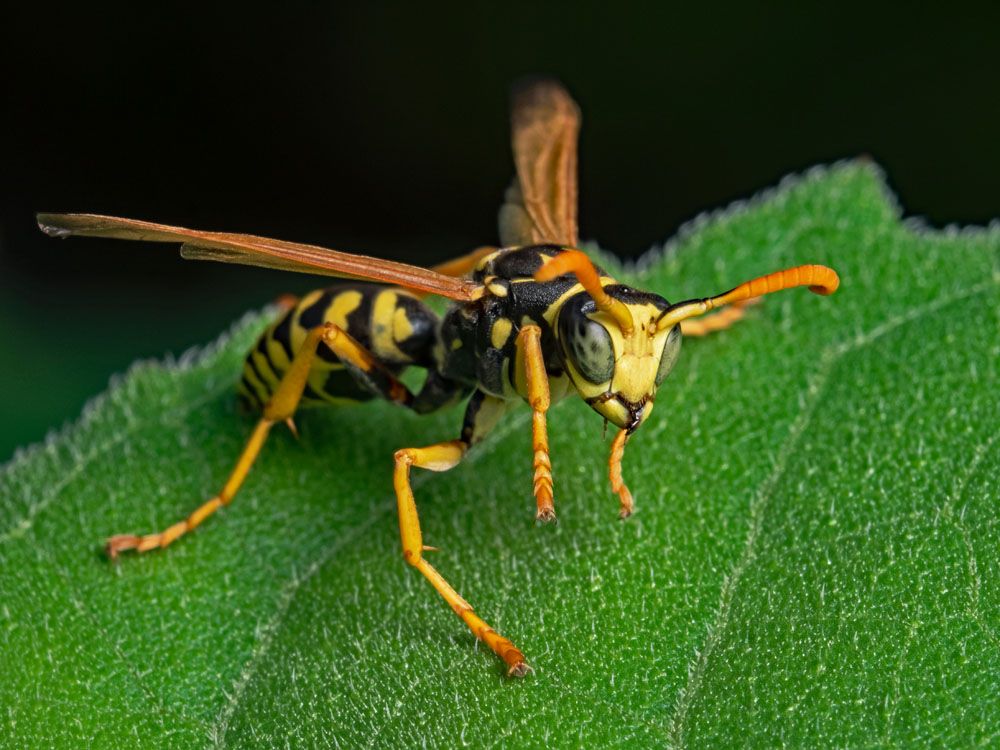
European Paper Wasp – Polistes dominulus
European Paper Wasps
Family: Polistes dominula
Common Name: Wasp, European Paper Wasp
Appearance: European paper wasps are one of the most common species of wasps. They can reach up to 20 mm and have a black body with yellow stripes and spots on the whole body. They have yellow antennae and legs with a little black tint at the base. They have wings folded longitudinally at rest. They often bite humans when disturbed, and the affected area becomes swollen.
Host Plants or Food: General feeder. Mostly feed on caterpillars, flies, bee larvae, nectar, and honeydew.
Territory: North America, South America, Southern Europe, North Africa, Asia, Australia.
Mode of Damage: Beneficial Garden Insect. They do not damage the plants and prey on small insects and plant pests.
Habits and Life History:
- Paper wasps are found everywhere around us. They can be in the gardens, field crops, homes, old buildings, etc.
- Like ants and other wasps, European paper wasps are also eusocial. They have one group of female queens and males and another group of female workers.
- There is a Queen of each colony who mates with more than one male. She usually prefers the resident male to the transient one.
- Females, after overwintering, lay eggs into the newly constructed or old nests. The eggs hatch into larvae within a few days. The larvae feed on the pre-chewed caterpillar that has been brought by their mother into the nest.
- When the first brood matures into worker females, the Queen devotes herself to egg-laying. The female workers enlarge the best, collect the food and defend the nest.
- The larvae, which are laid after the first brood, mature into males, fertile females, and sterile females. The males and sterile females die as the winter approach while the fertile females overwinter under some safe place, and the cycle continues.
